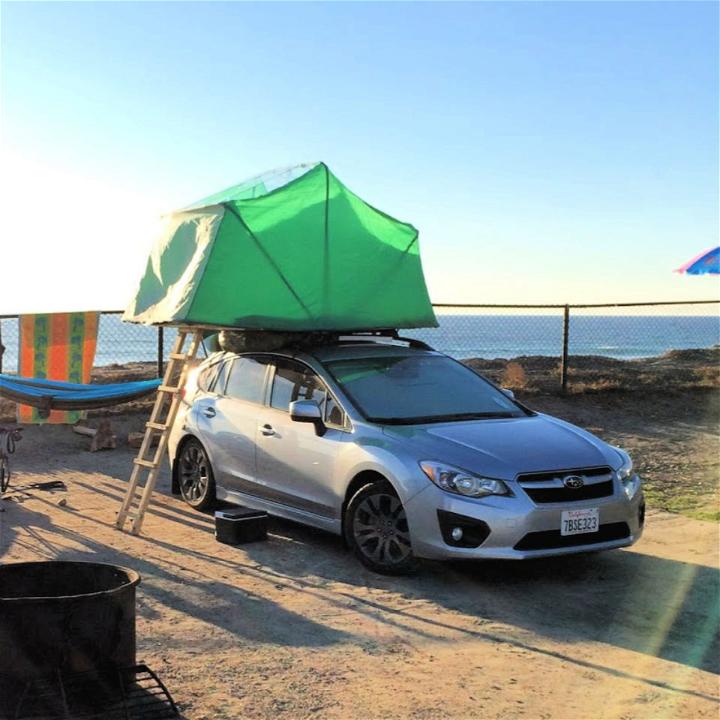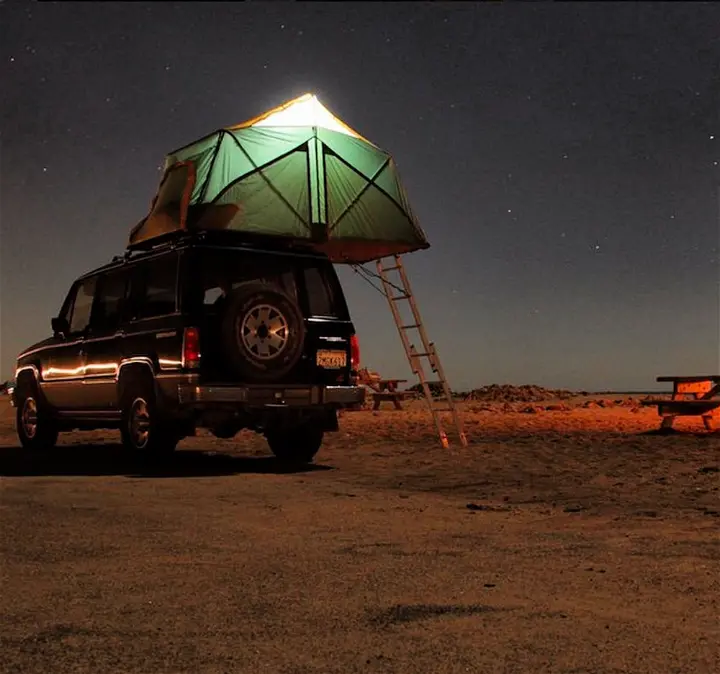Sports play an essential role in promoting physical health, mental well-being, and social interaction. Whether you prefer indoor or outdoor activities, engaging in sports provides numerous benefits and opportunities for personal growth and enjoyment.Indoor sports refer to activities that are conducted within an enclosed space, such as Walking Pad,gyms, leisure centers, or sports halls. These sports offer a controlled environment with regulated conditions, making them suitable for year-round participation. Outdoor sports, on the other hand, are played in open-air environments, such as parks, fields, or natural landscapes. These sports provide a connection to nature and offer unique challenges that can add excitement to the sporting experience. Let’s explore the advantages of outdoor sports!

I. Introduction to DIY Roof Top Tents
A. Overview of the Benefits and Advantages of Building a DIY Roof Top Tent
Building a DIY roof top tent offers numerous benefits. It allows for customization, cost savings, and a sense of pride in creating your own adventure shelter. DIY roof top tents offer the flexibility to design a tent that meets your specific needs and preferences.
B. Understanding the Freedom and Customization Opportunities of DIY Projects
DIY roof top tents provide the freedom to design and customize every aspect of the tent. From the materials used to the layout and features, you have the opportunity to create a unique and personalized camping experience.
C. Exploring the Thrill and Satisfaction of Creating Your Own Adventure Shelter
Building your own roof top tent can be an exciting and fulfilling project. It allows you to develop new skills, challenge yourself, and experience the satisfaction of using a product you created with your own hands.
II. Planning and Designing Your DIY Roof Top Tent
A. Assessing Your Camping Needs and Requirements

- Identifying Factors to Consider for Designing a Customized Roof Top Tent
Consider factors such as the number of occupants, sleeping arrangements, storage space requirements, and any specific features or amenities you desire.
- Exploring Different Design Options Based on Personal Preferences
Research various designs and configurations to determine which one best suits your needs and preferences. Consider factors such as fold-out vs. pop-up designs, single vs. double occupancy, and additional features like awnings or annexes.
B. Gathering Materials and Tools for the Project
- Highlighting Essential Materials and Tools for DIY Roof Top Tent Construction
Gather materials such as aluminum or steel for the frame, tent fabric, insulation, and hardware. Acquire tools including drills, saws, measuring tools, and fasteners.
- Exploring Alternative and Upcycled Materials for Cost-effective Solutions
Consider repurposing or upcycling materials to keep costs down. For example, you may use salvaged wood for the base or repurpose an old tent for the fabric.
III. Constructing the Base and Frame of Your DIY Roof Top Tent
A. Building a Solid and Stable Base
- Exploring Different Base Construction Methods (e.g., Plywood, Aluminum Frame)
Choose a strong and lightweight material for the base, such as plywood or aluminum. Ensure proper support and weight distribution to maintain stability and durability.
- Identifying Tips for Ensuring Proper Weight Distribution and Durability
Distribute weight evenly across the base and strengthen critical areas with additional supports or reinforcement. Consider factors such as weight limits, vehicle compatibility, and weight distribution during the construction process.
B. Creating a Sturdy and Functional Frame
- Highlighting Frame Materials and Techniques for Roof Top Tent Construction
Select a material for the frame that provides strength, stability, and resistance to corrosion. Aluminum or steel are commonly used for their durability and lightweight properties.
- Exploring Reinforcement and Attachment Methods for a Secure Frame
Reinforce critical areas of the frame with additional bracing or supports. Use sturdy hardware and attachment methods to secure the frame to the base and ensure a strong and secure structure.
IV. Adding the Tent Fabric and Accessories
A. Selecting Suitable Tent Fabric and Materials
- Exploring Different Options for Tent Fabric (e.g., Canvas, Ripstop Nylon)
Choose a fabric that is durable, weather-resistant, and suitable for your intended use. Consider factors such as breathability, waterproofness, and UV protection.
- Highlighting Weather Resistance and Durability in Tent Material Selection
Ensure that the chosen fabric can withstand various weather conditions such as rain, wind, and sun exposure. Look for fabrics with reinforced stitching, taped seams, and UV-resistant coatings.
B. Incorporating Essential Accessories and Features

- Identifying Must-have Accessories (e.g., Windows, Ventilation, Zippers)
Consider adding features such as windows, mesh screens for ventilation, high-quality zippers, and interior storage pockets to enhance functionality and comfort.
- Exploring Customizable Features to Enhance Comfort and Convenience
Personalize your DIY roof top tent by incorporating additional features such as integrated lighting, USB charging ports, or interior organizers to optimize space utilization and convenience.
V. Installation and Attachment to Your Vehicle
A. Ensuring Proper Roof Rack Compatibility
- Identifying Roof Rack Types and Compatibility with DIY Roof Top Tents
Check the compatibility of your DIY roof top tent with your vehicle’s roof rack system. Ensure that the tent attachment points align securely with the roof rack.
- Exploring Attachment Methods and Safety Considerations
Follow manufacturer guidelines for attaching the tent to the roof rack. Use appropriate mounting hardware and secure the tent firmly to prevent movement or detachment during use.
B. Step-by-Step Installation Instructions

- Providing Detailed Instructions and Tips for Mounting Your DIY Roof Top Tent
Provide step-by-step instructions for mounting the DIY roof top tent to your vehicle. Include tips for proper alignment, tightening, and safety checks to ensure a secure and stable installation.
- Highlighting Safety Precautions and Quality Assurance Measures
Emphasize the importance of regularly checking the tent’s attachment points, hardware, and overall stability. Encourage users to follow safety guidelines and conduct quality assurance checks before each use.
VI. Testing and Quality Assurance
A. Performing Test Setups and Inspections
- Exploring Pre-installation Test Setups for Stability and Functionality
Conduct test setups of the DIY roof top tent before actual use. Check for stability, ease of setup, and functionality to identify any potential issues or areas for improvement.
- Identifying Post-installation Inspections for Safety and Structural Integrity
Regularly inspect the DIY roof top tent for wear and tear, loose or damaged components, and structural integrity. Conduct inspections after each trip and address any necessary repairs or adjustments promptly.
B. Iterative Improvements and Fine-tuning
- Highlighting the Importance of Continuous Improvement and Modifications
Continue to refine and improve your DIY roof top tent based on your experiences and feedback. Seek opportunities to enhance its functionality, durability, and overall performance.
- Exploring Fine-tuning Techniques for Optimal Performance
Experiment with modifications or additions to further optimize the functionality and comfort of your DIY roof top tent. Share your experiences and ideas with the DIY community to contribute to the collective knowledge and creativity.
Building your own DIY roof top tent offers the opportunity to create a customized adventure shelter for overland camping. By carefully planning, designing, and constructing your DIY project, you can enjoy the freedom and satisfaction of camping in a shelter that fits your specific needs and preferences. With proper installation and quality assurance measures, your DIY roof top tent will provide a safe and comfortable camping experience. Embrace the challenges and rewards of building your own roof top tent, and embark on memorable outdoor adventures with your unique creation.
